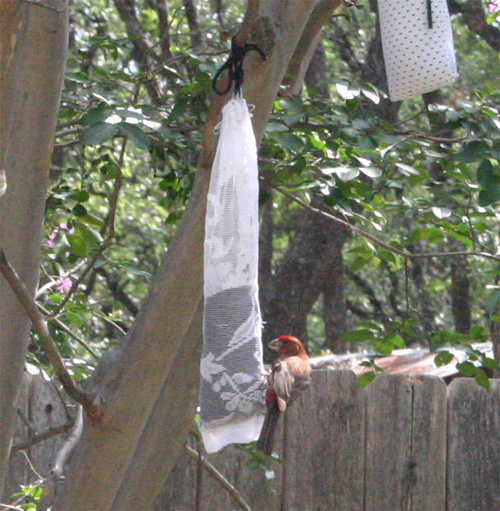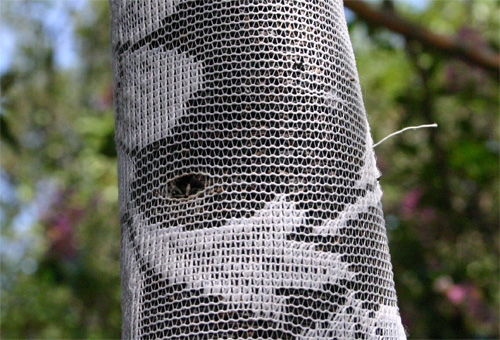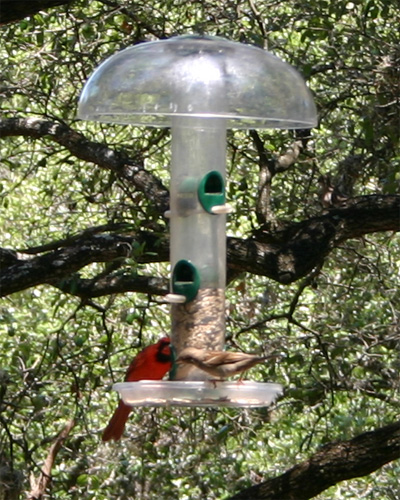Gardening is still such a mystery to me. What should work doesn’t, and what shouldn’t work does. I know there are all sorts of Murphy’s Laws when it comes to this crazy hobby. Here’s what I’ve discovered about the way gardening works. Gardening gods, why do you forsake me?!!
*Why is it that you promise yourself most determinedly that this time you will not buy any plants, and when you get to the nursery you realize that not just one, but two of your most coveted hard-to-find plants have just arrived off the truck? (here is more Dutchman’s Pipevine — the other, non-pictured is a native milkweed I rarely see)
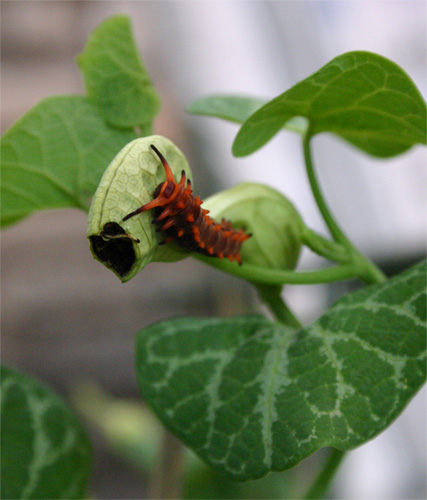 *Why is it that you wait so long for the first monarch of the season, and when you finally see one you discover all your milkweed is covered in aphids?
*Why is it that you wait so long for the first monarch of the season, and when you finally see one you discover all your milkweed is covered in aphids?
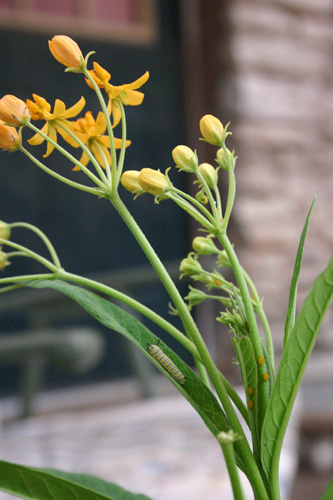
 *On the same note, why is it that ladybugs show up when there aren’t any aphids and leave before the ferocious onslaught of the little sap-suckers?
*On the same note, why is it that ladybugs show up when there aren’t any aphids and leave before the ferocious onslaught of the little sap-suckers?
*Why is it that your darling dogs have an impelling need to lay on and compact any dirt you till, and another impelling need to dig up any freshly planted garden bed? (This photo, by the way, is of the naughty dog that keeps getting in the pond. She’s usually camera-shy. Don’t be fooled by her gorgeous fur. It hides an imp.)
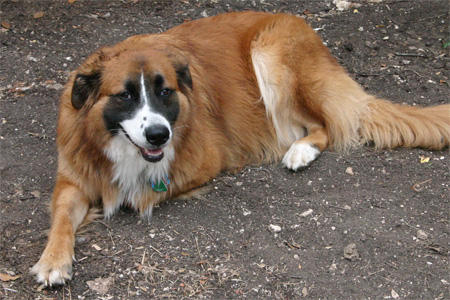 *And why is it that your yard can have plenty of available (dog) fertilizer but you can’t use one bit of it to make compost?
*And why is it that your yard can have plenty of available (dog) fertilizer but you can’t use one bit of it to make compost?
*Why is it that the bag that spills in the car is not the bag of pine straw, and not even the pleasant smelling potting soil, but the compost made from cow manure?
*Why is that you set out birdfeeders for hummingbirds and cardinals and what you get instead are gluttonous, wasteful doves and predatory wasps? (Ok, really, I get them all.)
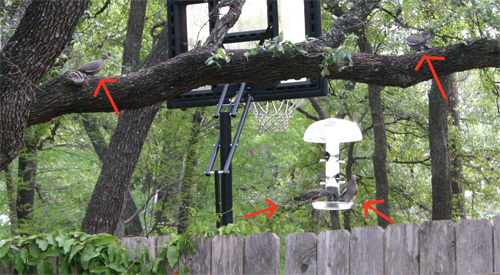
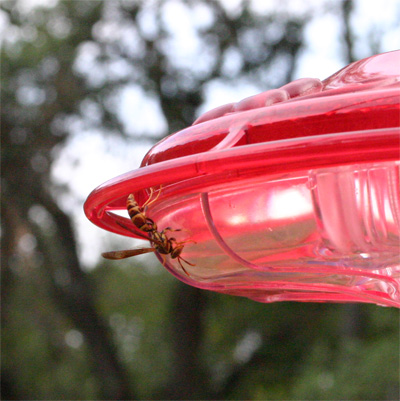
*Why is it that the pond you enjoy so much attracts, among other creatures, hornets and wasps that take a nice long, happy drink before going and killing your beloved caterpillars? (Sad note: the monarch caterpillar in the milkweed picture above, along with all its buddies, disappeared during the writing of this blog entry. Stupid, but necessary predators.)
*Why is that you attempt to sacrifice yourself to the gods for some rain by putting up a metal trellis while standing on a partially metal ladder with wire cutters and a hammer in your hand and thunder and lightning in the distance, and all you get is a few sprinkles, like a spit in the eye?
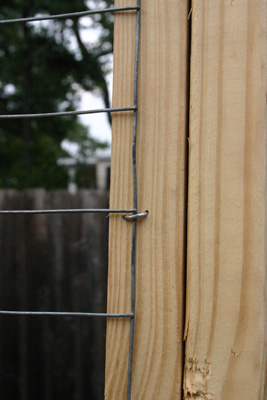 *Why is it that you don’t realize you have to stop at the grocery store on the way home until after you’ve covered yourself in stinky compost while bagging it at the nursery?
*Why is it that you don’t realize you have to stop at the grocery store on the way home until after you’ve covered yourself in stinky compost while bagging it at the nursery?
*Why is it that you buy a beautiful tree that you are determined to keep alive because it needs to shade the A/C unit and because it is replacing one that died, and it dies while the one that the dogs dug up multiple times over the winter is the one that is thriving? (Actually, three trees the dogs mostly destroyed came back and are doing well.)
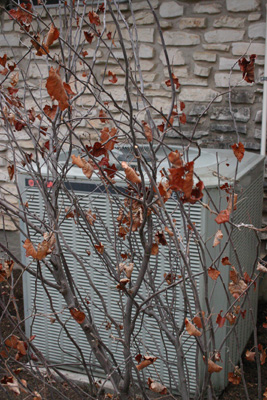
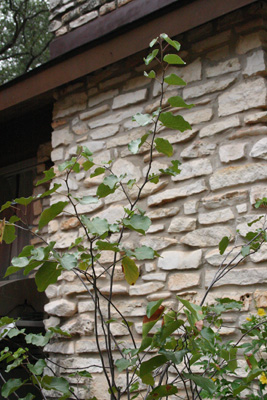 *Why is it that the young trees you rarely water (including two you forgot about for weeks in your garage after the last frost) survive, but the ones you faithfully water on a recommended schedule die?
*Why is it that the young trees you rarely water (including two you forgot about for weeks in your garage after the last frost) survive, but the ones you faithfully water on a recommended schedule die?
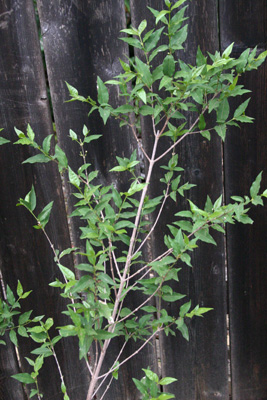 *Why is it that the plants you still haven’t managed to put mulch around are doing better than the ones you surrounded with three inches of mulch?
*Why is it that the plants you still haven’t managed to put mulch around are doing better than the ones you surrounded with three inches of mulch?
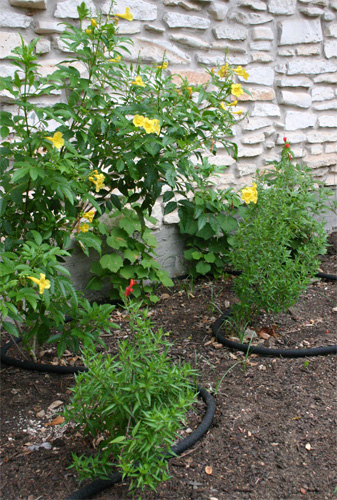
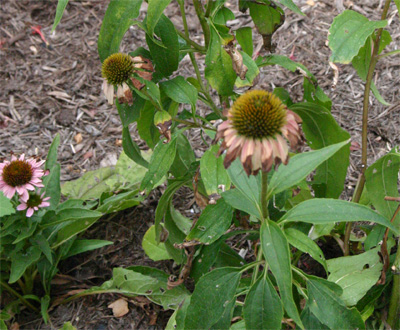
*Why is it that the most amazing, beautiful sights in your garden happen when your camera is nowhere near?
*Why is it that a random new seedling grows in your yard and you have to wait until it gets big to find out what it is, or whether it is friend (keeper) or foe (weed or invasive)? This one looks like a friend, I hope, but I don’t know what it is yet.
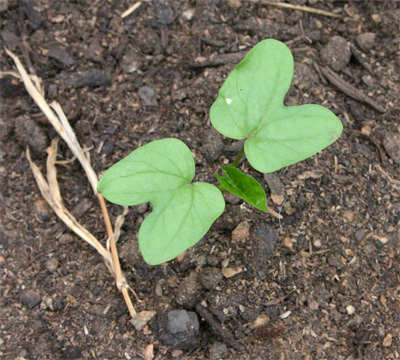 *Why is it that your son doesn’t want to work outside when it’s hot, but then when it’s cool and overcast, he still doesn’t want to work? Oh wait, I know that one.
*Why is it that your son doesn’t want to work outside when it’s hot, but then when it’s cool and overcast, he still doesn’t want to work? Oh wait, I know that one.
*(from the son) Why is it that your mom always makes you work, but barely ever lets you goof around? Oh wait, I know that one. (from the Mom: clearly I just let him goof around)
*Why is it that your beautiful plants take so long to grow, but your weeds grow like… well, weeds?
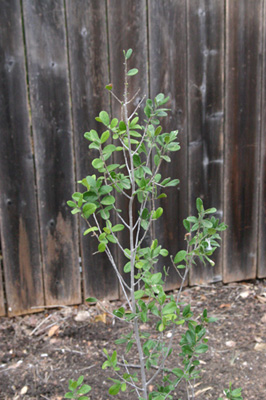 *(from the other son) Why is it that every time you want to plant something, your mom doesn’t have a plant to plant? But when you don’t want to plant something, she has lots and lots.
*(from the other son) Why is it that every time you want to plant something, your mom doesn’t have a plant to plant? But when you don’t want to plant something, she has lots and lots.
*Why is it that you lovingly make several cost-effective environmentally-friendly thistle socks for the birdies, and the finches tear such big holes in them until the socks won’t hold any more seed, making you want to reconsider plastic? (technically these two are the brand-name socks — I’d already removed the destroyed homemade ones… I guess I better get busy making more)
 *Why is it that you work so hard to create a great garden for your new veggies and then realize that you managed to let some of your herbs die in the process?
*Why is it that you work so hard to create a great garden for your new veggies and then realize that you managed to let some of your herbs die in the process?
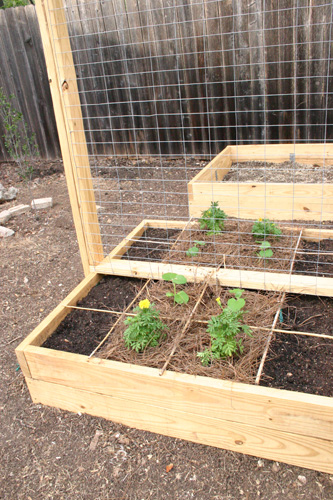
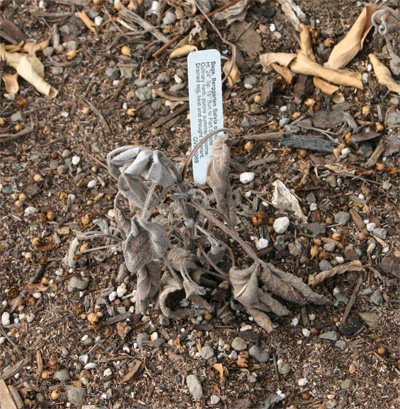 *Why is it that you can spend so much time making your outside yard beautiful and neglect your poor house plants?
*Why is it that you can spend so much time making your outside yard beautiful and neglect your poor house plants?
*(from the husband) Why is it that dinner isn’t ready yet? Oh wait, I know that one.
Got any to add? Please share them! I have a feeling this is a non-ending list!
Author’s edit on 7/26/09: How could I forget this major one: Why is it that I finally start gardening, and Texas finds itself in the middle of perhaps its worst drought ever, with drastically reduced water availability and temperatures over 100 degrees all summer long?
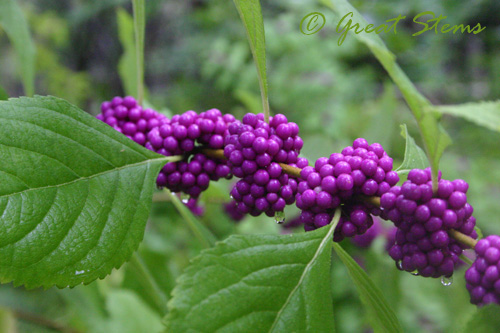 But aside from its beauty, what makes this shrub truly valuable is that it is a fall and winter food source for more than 40 different songbird species, as well as other birds. It also is enjoyed by mammalian wildlife, including the opossum and raccoon. Its deer resistance probably depends on your area and the harshness of seasonal weather. In some areas, deer leave the mature plants alone, but they’re happy to nibble on young shrubs and sometimes the berries. In general, though, it’s best to plant the shrub in a protected area if you are concerned about deer.
But aside from its beauty, what makes this shrub truly valuable is that it is a fall and winter food source for more than 40 different songbird species, as well as other birds. It also is enjoyed by mammalian wildlife, including the opossum and raccoon. Its deer resistance probably depends on your area and the harshness of seasonal weather. In some areas, deer leave the mature plants alone, but they’re happy to nibble on young shrubs and sometimes the berries. In general, though, it’s best to plant the shrub in a protected area if you are concerned about deer.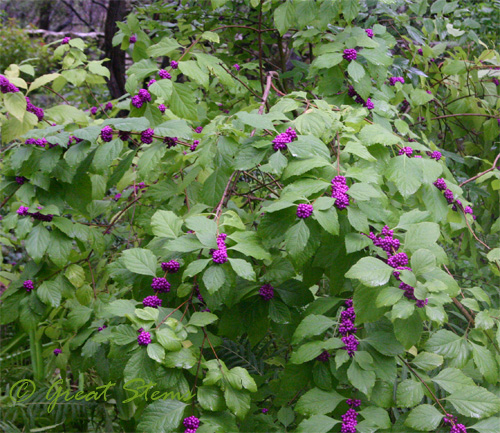 In the summer, the shrub has delightful pale flowers. But it is the beautiful clusters of purple berries that really provide that wow factor come fall. There is also a white variety, but if choosing a color most attractive to birds, I’d stick with purple.
In the summer, the shrub has delightful pale flowers. But it is the beautiful clusters of purple berries that really provide that wow factor come fall. There is also a white variety, but if choosing a color most attractive to birds, I’d stick with purple.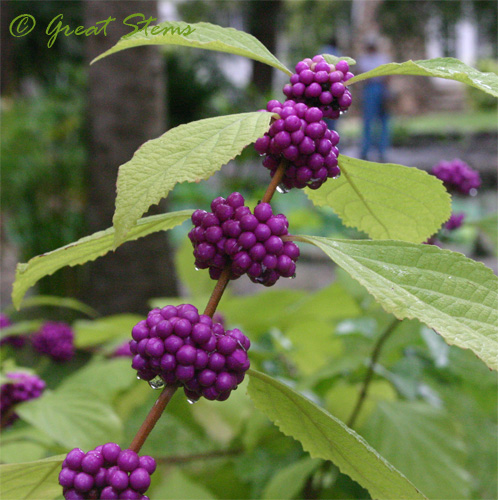 The deciduous shrub is typically 5-6 feet tall when mature, but I’ve seen some get more than 8 feet tall. It prefers partial sun/partial shade, but with extra water and attention, it can handle more sun, too. But as an understory plant, it is at its best.
The deciduous shrub is typically 5-6 feet tall when mature, but I’ve seen some get more than 8 feet tall. It prefers partial sun/partial shade, but with extra water and attention, it can handle more sun, too. But as an understory plant, it is at its best.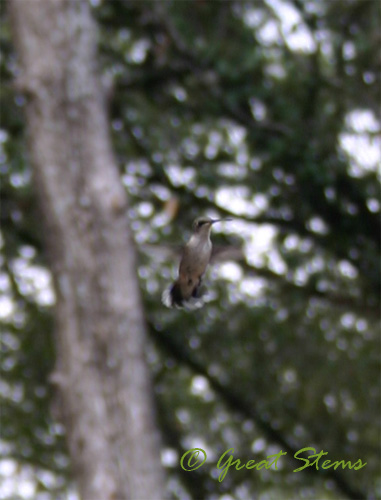
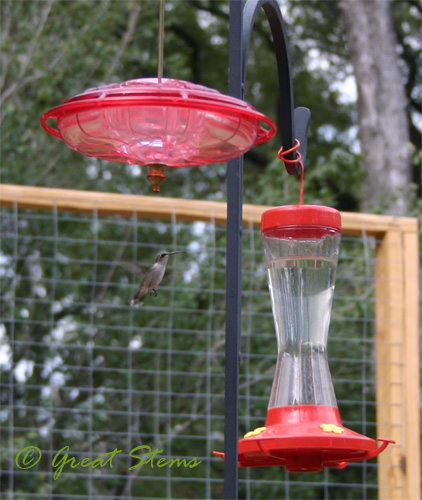
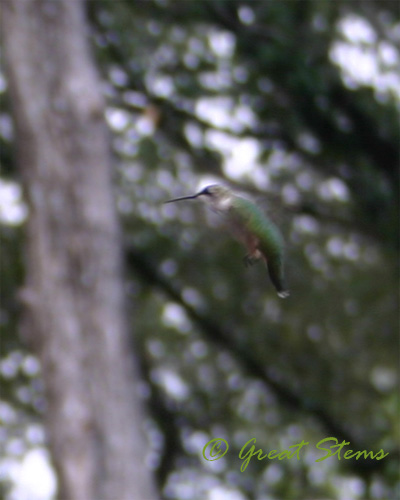
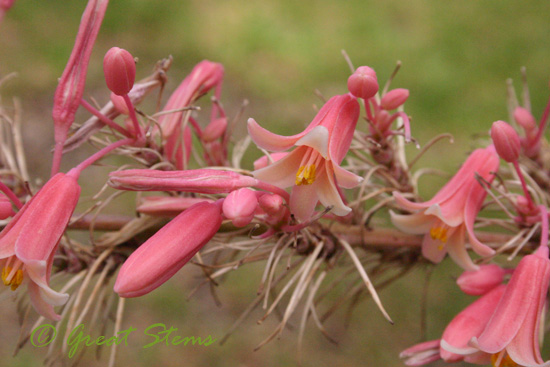
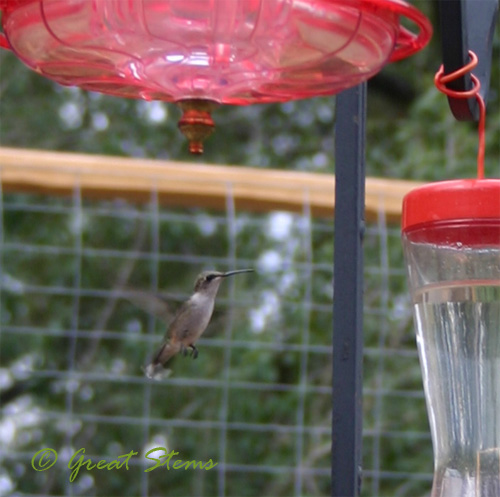
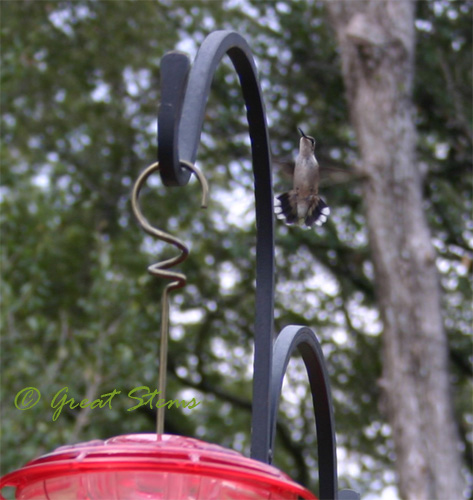













 *(from the other son) Why is it that every time you want to plant something, your mom doesn’t have a plant to plant? But when you don’t want to plant something, she has lots and lots.
*(from the other son) Why is it that every time you want to plant something, your mom doesn’t have a plant to plant? But when you don’t want to plant something, she has lots and lots.

 *Why is it that you can spend so much time making your outside yard beautiful and neglect your poor house plants?
*Why is it that you can spend so much time making your outside yard beautiful and neglect your poor house plants?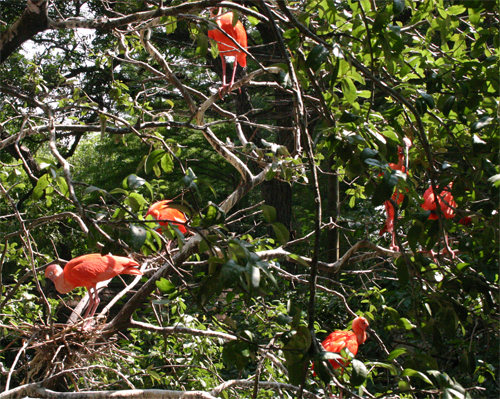
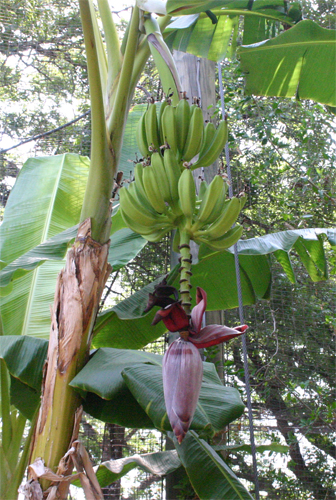
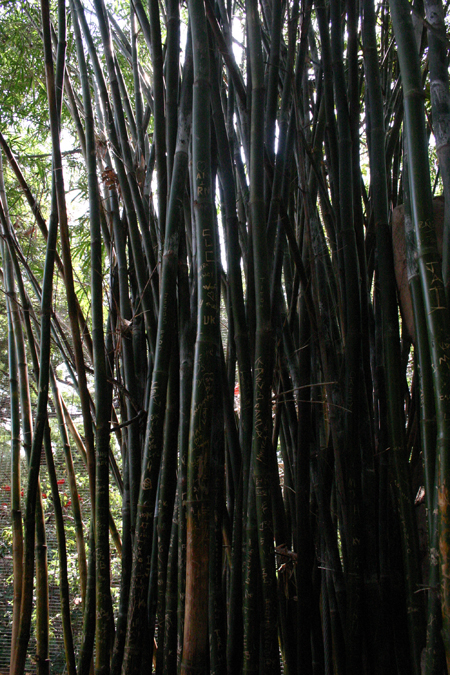
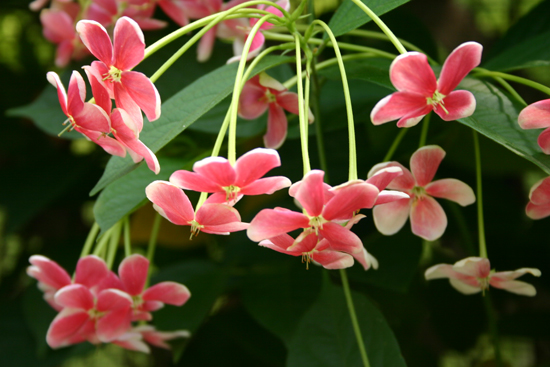
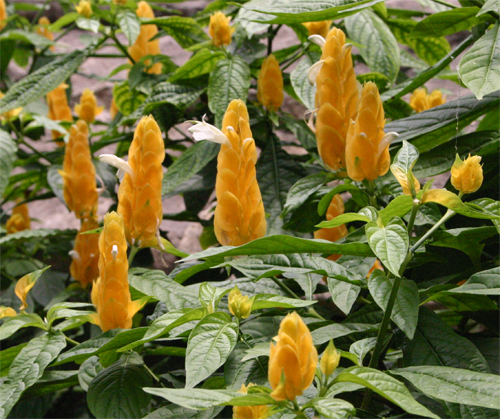
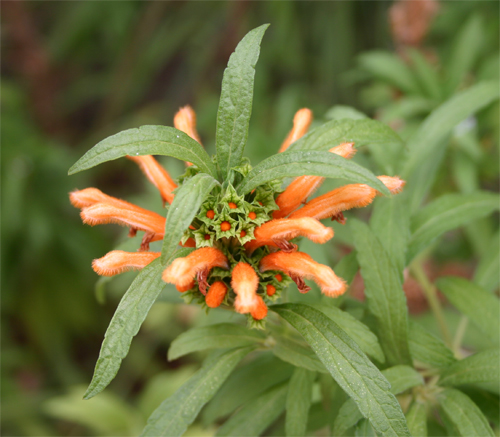
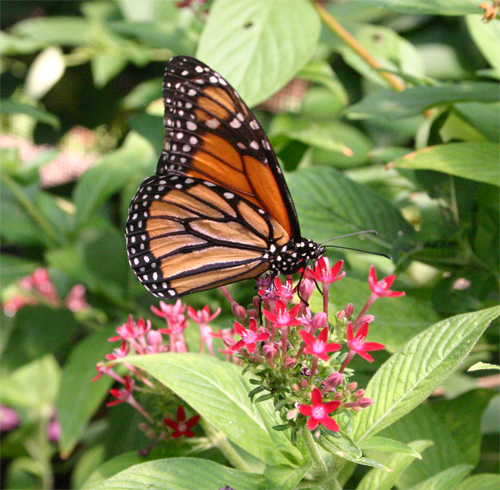
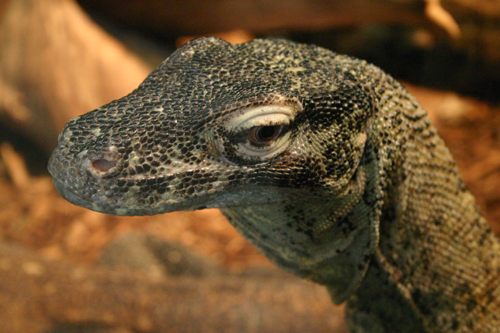
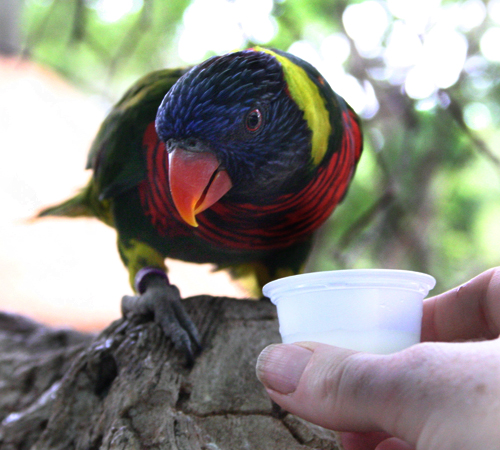
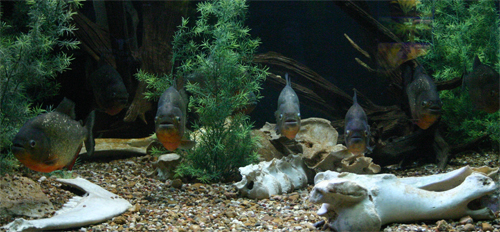
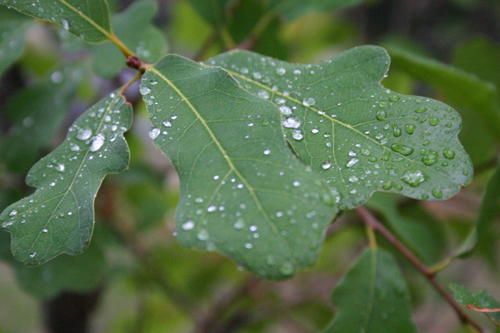
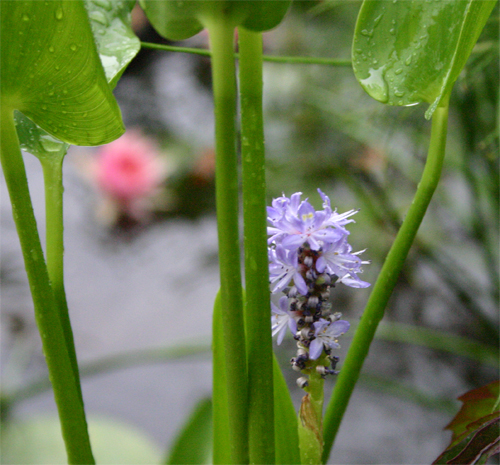
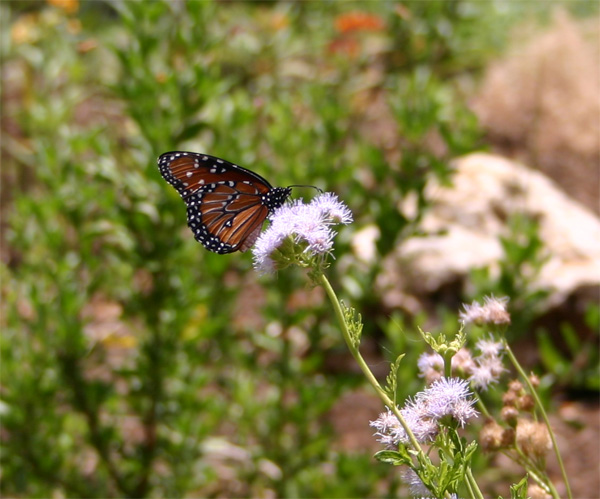
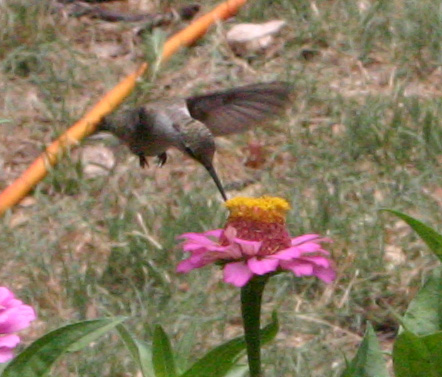 How can you help? If you have a garden, especially an organic one, you are probably already doing tons to help the populations of bees and other pollinators. But Pollinators Week for me is an excuse to go out and buy a native plant just for the sake of the wildlife, so as soon as I finish this blog entry, the boys and I are going to
How can you help? If you have a garden, especially an organic one, you are probably already doing tons to help the populations of bees and other pollinators. But Pollinators Week for me is an excuse to go out and buy a native plant just for the sake of the wildlife, so as soon as I finish this blog entry, the boys and I are going to 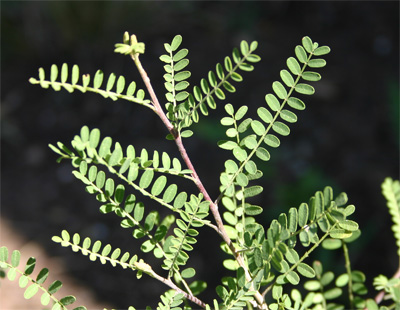
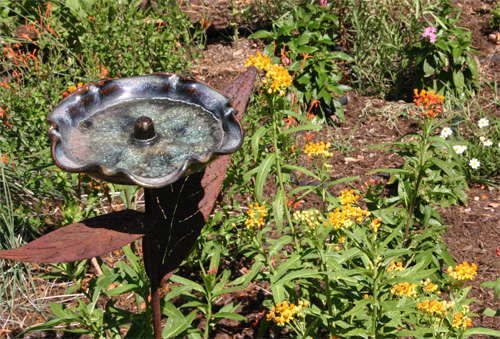
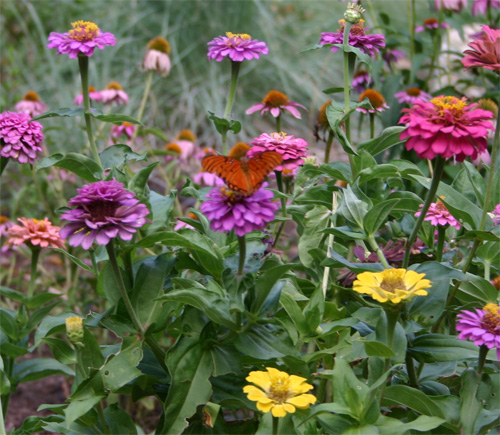
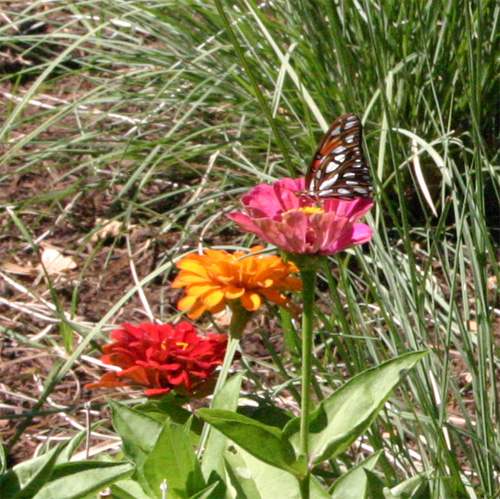
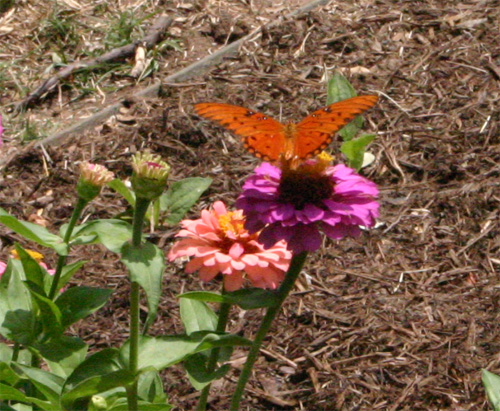 Ah, here’s one of my absolute favorites of the Texas natives, the wafer ash, or hop tree (Ptelea trifoliata). It can be hard to find in a nursery, but it’s easy to grow from seed, and they’re all over. Our dogs ate the top off our first one, and it amazingly grew back, the determined little thing. The wafer ash is a host plant of the giant swallowtail and tiger swallowtail. It’s part of the citrus family, and it’s one time that leaves of three (trifoliata) are a good thing. They have nothing to do with poison ivy, by the way, so get that out of your mind!
Ah, here’s one of my absolute favorites of the Texas natives, the wafer ash, or hop tree (Ptelea trifoliata). It can be hard to find in a nursery, but it’s easy to grow from seed, and they’re all over. Our dogs ate the top off our first one, and it amazingly grew back, the determined little thing. The wafer ash is a host plant of the giant swallowtail and tiger swallowtail. It’s part of the citrus family, and it’s one time that leaves of three (trifoliata) are a good thing. They have nothing to do with poison ivy, by the way, so get that out of your mind!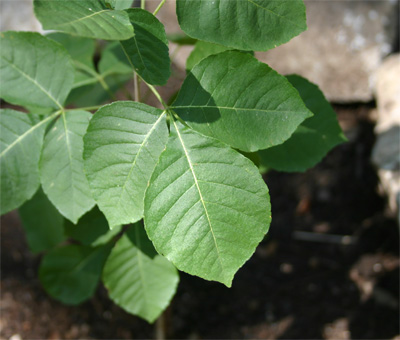
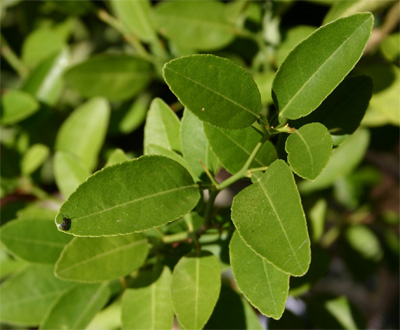
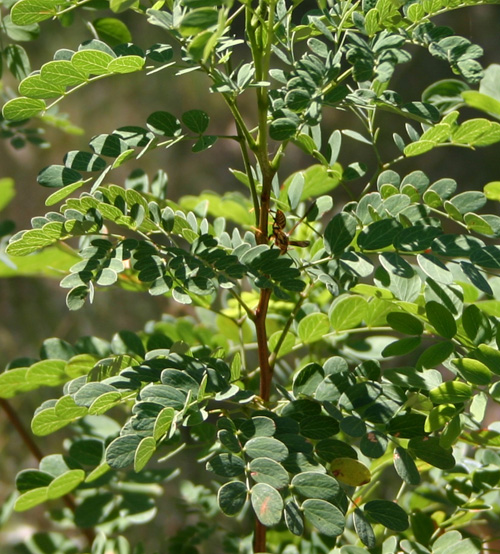
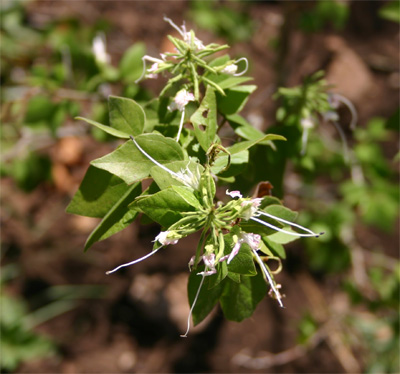
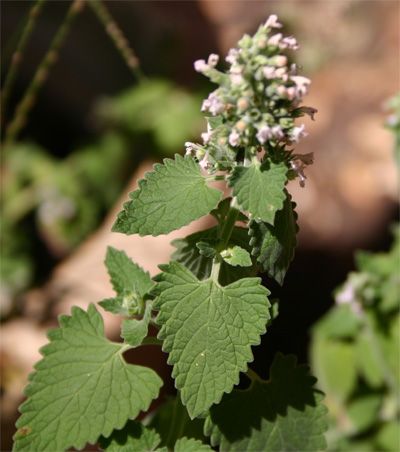
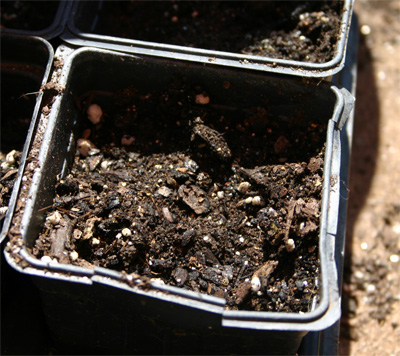
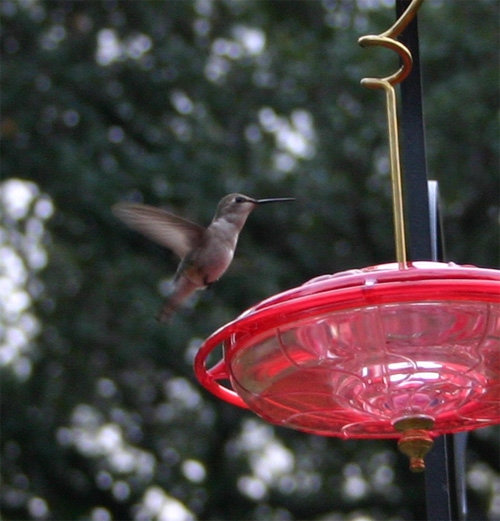
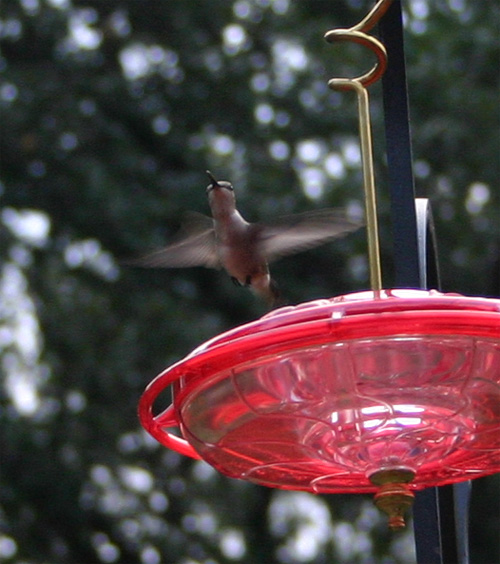 My kids have been involved in our new garden since I began it in the fall. Amazingly, they’ve been fairly willing to help at least a few minutes each day, and they delight as I do when birds and dragonflies and butterflies and other creatures come visit our blooming flowers and pond.
My kids have been involved in our new garden since I began it in the fall. Amazingly, they’ve been fairly willing to help at least a few minutes each day, and they delight as I do when birds and dragonflies and butterflies and other creatures come visit our blooming flowers and pond. 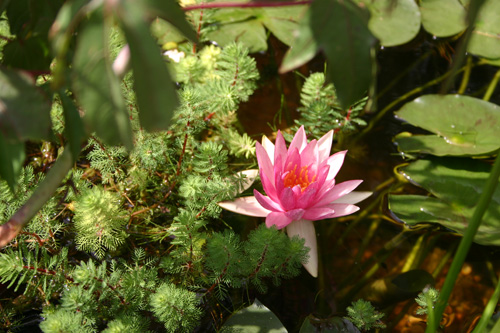 And I also get to smile about our
And I also get to smile about our 